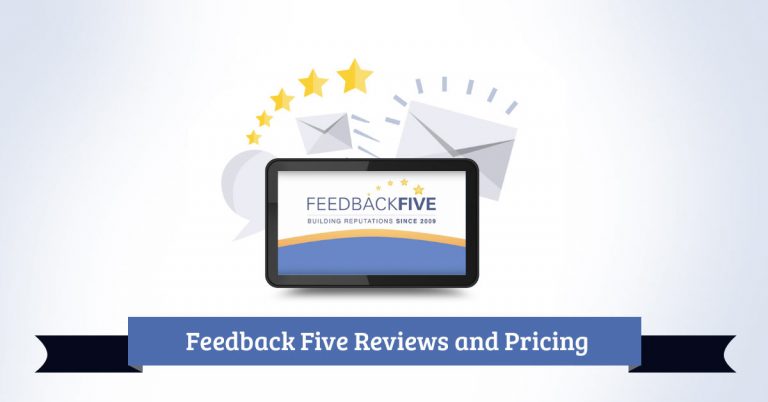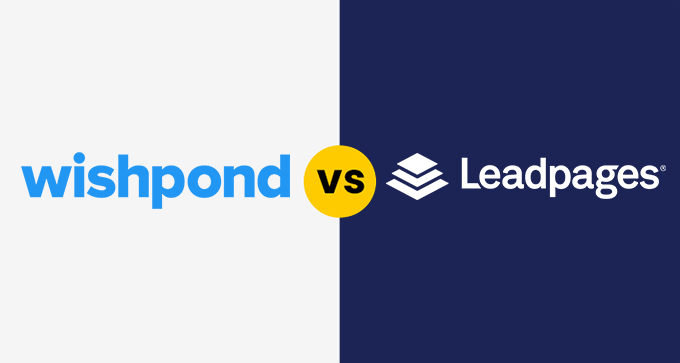
The internet changed a lot of things in our everyday life, one of which is how we carry out business and commercial activities. This would later be known as eBusiness and eCommerce amongst other terms.
Currently, almost every business from startups to large enterprises has an online presence whether they carry out online commercial activities or not.
eCommerce and eBusiness are two terms that are often mistaken for the other. While they are both in the online business industry, they are not the same.
I’ll be explaining the differences between eCommerce and eBusiness in this article.
Also Read: Best eCommerce Mobile Apps
What Is eCommerce?
Photo by insta_photos at Shutterstock
eCommerce – electronic commerce – is buying and selling of goods and services that takes place over the internet. Hence, it involves the use of computers – laptops, smartphones, tablets, and any other device that can browse the internet.
Traditionally, if you wanted to buy a shirt, you would walk into a shop, pay, and you would get your shirt. With eCommerce, you just need to visit a website – like Amazon, Walmart, eBay – to order a shirt, you pay online and the shirt will be delivered to your address.
Almost everything can be sold online and almost every brick-and-mortar store has an online website where customers can buy and pay for the same goods and services.
The advantage of eCommerce is that it helps businesses reach a wider market. Contrary to opening shops in different locations, a business can have one eCommerce website accessible by anyone, anywhere in the world.
Over 20 million eCommerce websites exist which shows how competitive the industry is. However, the top dogs include Amazon, eBay, Walmart, Rakuten, Etsy, and AliExpress, to name a few.
Explore: Best eCommerce Tools
What Is eBusiness?
Photo by Diva Plavalaguna from Pexels
eBusiness – electronic business – involves all business activities online. As a company doing business, you’ll have different departments in your organization. For example, the sales department, marketing department, procurement department, HR department, and others.
If you decide to do business online, you’ll also establish these different departments online. In other words, you won’t only set up a website where customers can buy goods and services, but also create channels for other aspects of your business.
Hence, eBusiness isn’t just buying and selling; buying and selling is just one aspect of eBusiness which makes eCommerce a model of eBusiness. Other major aspects under eBusiness include eBanking, eMarketing, eProcurement, and eLearning amongst others.
Some of the world’s most successful companies like Apple, Microsoft, Meta (Facebook), PayPal, NetFlix, Uber, Google, Yahoo, etc, owe their successes to being able to do all-around business over the internet (eBusiness).
Check Out: Ways To Improve eCommerce SEO
eCommerce vs eBusiness: Differences
Operations
eCommerce
By Jacob Lund at Shutterstock
eCommerce operations only involve commercial activities. Commerce is defined as the activity of buying and selling. Hence, if you’re an eCommerce company, it’s either you’re selling goods or services to customers for monetary gain. If you’re not buying and selling, you’re not an eCommerce.
There are many other operations under eCommerce. If you’re selling goods, for example, you also need to carry out order fulfillment, warehouse management, inventory management, shipping logistics, and customer service.
Larger eCommerce businesses engage in more advanced operations like inventory distribution and multichannel retail strategy. eCommerce companies that sell services or digital products have less to do than those that sell physical products.
Also Read: Dropshipping vs eCommerce – What’s the Difference?
eBusiness
Photo by Anthony Shkraba from Pexels
eBusiness is a superset of all online business activities including commercial and non-commercial activities. If you’re selling goods and services online, you’re engaging in eBusiness under the eCommerce niche.
Some companies just want to have an online presence for exposure without selling any goods or services online; hence eBusiness also involves non-commercial activities.
Generally, so long as you’re conducting your business on the internet using electronic devices, you’re engaging in eBusiness. In addition to eCommerce, CRM (Customer Relations Management), and ERM (Enterprise Resource Management) are the major eBusiness operations.
Companies doing business online carry out CRM operations to develop strategies for winning and retaining customers. On the other hand, they carry out ERM operations to minimize risks, mainly financial and qualitative risks, involved in achieving their goals.
Also Read: Best eCommerce Podcasts
Requirements
eCommerce
By maicasaa at Shutterstock
To start an eCommerce, the basic thing you need is a website. You can easily build an eCommerce website using tools like
What’s most important is that you have quality goods and services to sell to customers. On your eCommerce website, you upload the goods or services you offer, set up payment, and anyone that visits the website can buy from you.
A website is the basic requirement but, to build trust, eCommerce merchants go further to set up social media profiles and offline shops or offices.
Nowadays, retailers don’t even need websites for eCommerce. You can conduct eCommerce activities across social media platforms, most especially Instagram and Facebook.
On the other hand, for your customers to buy from you, they just need a browsing device and the internet to access your eCommerce website or page.
Explore: QR Code Applications For eCommerce
eBusiness
Photo by ThisIsEngineering from Pexels
To run a business online, you’ll need multiple websites, CRM, and ERM tools to name a few. In many ways, it’s no different from starting a business offline and it’s specific to the type of eBusiness you’re engaging in.
For example, creating an eBusiness presence for a hospital is different from that of a retail store. While the retail store is strictly eCommerce, the hospital is targeting healthcare consumers.
Hence, your eBusiness can be a sole proprietorship, partnership, LLC, or corporation. Furthermore, you have to set up social media accounts, on all major social media platforms to engage customers.
If you’re a large company, you need CRM and ERM tools to improve business relationships and grow your business.
Approach
eCommerce
Photo by MART PRODUCTION from Pexels
The average eCommerce store follows an extroverted approach as they mainly carry out outgoing activities. Since the goal is to sell goods and services to customers, an eCommerce store is more focused on satisfying the customer than anything else.
Aside from customers, eCommerce stores also focus on suppliers, where they get the products from, and distributors, possible middle agents that deliver the goods and services to the end-users. Hence, most eCommerce processes are external, just like brick-and-mortar stores.
Also Read: eCommerce Link Building Strategies That Work
eBusiness
Photo by Alex Green from Pexels
eBusiness is concerned about both the external and internal factors in business – customers, suppliers, workplace auditing, human resources, etc. This is an advantage as it helps in business management.
Types
eCommerce
By Drazen Zigic at Shutterstock
There are different types of eCommerce businesses even though they all involve monetary transactions. The different types include B2B, B2C, C2C, and C2B.
B2B – Business to Business – involves buying and selling between two businesses; Business A sells to Business B. This is very common in dropshipping where retailers buy from other retailers before selling to customers.
B2C – Business to Consumer – is the standard eCommerce model where a customer buys from a business. Customers can also sell their stuff to other customers which is the C2C – Consumer to Consumer – eCommerce model.
Finally, C2B – Consumer to Business – involves a business buying from a customer. C2B is not a very popular eCommerce model as it mostly involves customers selling their services like ideas, reviews, etc. than goods.
Explore: Best SEO Tools For eCommerce
eBusiness
Photo by RODNAE Productions from Pexels
Since eCommerce is a part of eBusiness, B2B, B2C, C2C, and C2B are also types of eBusiness. However, most other eBusiness models focus more on B2B and B2C.
Also, there’s more room for pure-play business in the eBusiness industry than the eCommerce niche. Take Netflix, an eBusiness and pure-play company, for instance.
Netflix only offers streaming services; you can’t buy and own movies on Netflix as you can buy and own products from eCommerce stores like Amazon and eBay. Netflix is a B2C company but doesn’t fall under the eCommerce niche.
Generally, the different aspects of eBusiness include eCommerce, ERM, CRM, Business Intelligence, Supply Chain Management, eProcurement, eMarketing, eBanking, and online advertising among others.
Just like eCommerce, other eBusiness types have their different subtypes. For instance, eBanking involves SMS banking, online banking, mobile banking, point of sale, etc.
Also Read: Best eCommerce Shipping Software
Examples
eCommerce
By Frederic Legrand – COMEO at Shutterstock
eCommerce stores either sell physical products, digital products, or online/offline services. There are many examples of eCommerce websites and as mentioned earlier, you can conduct eCommerce activities without a website.
Amazon, eBay, Walmart, AliExpress, and Wish are examples of eCommerce websites that sell physical products. This can be clothes, furniture, footwear, accessories, jewelry, or electronics.
Kindle eBooks, Apple Books, and Google Play Books are examples of eCommerce websites that sell digital products – eBooks. Other examples include GettyImages, Shutterstock, and iStockPhoto where you can buy digital images.
Freelance platforms are the most common eCommerce marketplaces for people who sell services. On Upwork, for example, you can purchase different services; you can hire designers, writers, accountants, lawyers, HR managers, programmers, web developers, and engineers to name a few.
All of these freelancers are performers in the eCommerce industry; they sell their services to businesses and agencies.
Explore: Complete Guide To eCommerce Push Notifications
eBusiness
By Vladimka production at Shutterstock
Most established eCommerce platforms are also eBusinesses. Take Amazon, for instance, the platform is popular for its online marketplace. However, Amazon also offers other products and services like Prime Video, Amazon Payments, and Amazon Studios.
These other products and services aren’t eCommerce platforms but eBusiness platforms. Companies like CNN, Bloomberg, The New York Times, The New York, and The Guardian all carry out their business online and they’re not eCommerce platforms.
Multinational companies are also good examples of eBusinesses. Companies like Shell Global, Saipem, CAT, TotalEnergies, and BP all have websites and eBusiness channels to establish their online presence
You can’t purchase Shell Global’s products from their website but you can find information about the company, get contacts, and view their projects among other things.
Also Read: eCommerce Product Image Optimization Examples
Advantages
eCommerce
The main advantage of eCommerce is its wide reach. If you have a store in the UK for instance, it’s hard for a customer in the US to visit and buy from you. However, with eCommerce, the customer can buy from the comfort of their room.
eCommerce makes the buying process a lot easier and convenient for customers. As an eCommerce merchant, you have the advantage of selling more products.
You can list up to a million products on your eCommerce store if you want; it’ll be very difficult to fill a physical store with such an amount of products.
Furthermore, managing eCommerce is less expensive than traditional commerce. You can start eCommerce models like dropshipping or print on demand with little or no capital.
eBusiness
Running an eBusiness has a lot of advantages. First, you have the eCommerce advantages of wider reach, easier and convenient customer experience, more sales possibilities, and fewer expenses.
If you’re not an eCommerce, engaging in eBusiness also offers possibilities to build your audience. Even if your business is mainly offline, customers can discover you from your eBusiness website and pay you a visit
For large enterprises and multinational companies, having an eBusiness platform promotes engagement between different departments in your organization.
It’ll be easier for procurement and production departments to source the best goods and suppliers, marketers can promote and get more leads via digital marketing and advertising, and the financial department can manage payroll more efficiently via ERM.
Explore: Best Studiopress Themes For eCommerce
Disadvantages
eCommerce
Unlike brick and mortar stores, eCommerce eliminates the need for a personal touch. You can sell products to a million customers without ever seeing them in person.
In addition, there’s little privacy between buyers and sellers in eCommerce, especially for stores that sell physical goods. For you to deliver a product to a customer, you must get their name, address, phone number, and email.
eCommerce requires shipping and logistics to survive. It can take a long time to deliver products if there are problems with the shipping method or if the customer lives very far away. Some eCommerce products are delivered after the customer no longer needs them.
Furthermore, since most customers pay with their credit/debit cards and online wallets, they could become victims of fraud or scams if the eCommerce store isn’t secure.
Starting an eCommerce is cheap but as you evolve into a full-fledged eBusiness, you may need to invest heavily in advanced tools.
eBusiness
The disadvantages of eCommerce are also the main disadvantages of eBusiness as eCommerce is the largest eBusiness model.
However, on a larger scale, eBusiness is very expensive. To build a successful eBusiness, you could spend a lot on building a website, purchasing web tools for CRM & ERM, online advertising, etc.
Furthermore, since you can reach more customers than traditional businesses, you’ll have more work to do with customer service, returns, feedback, etc.
Finally, the eBusiness industry is very competitive, you can get lost in the crowd if you’re not innovative.
Also Read: eCommerce Scams & How To Avoid Them?
eBusiness vs eCommerce: Similarities
By zaozaa19 at Shutterstock
The main similarity between eCommerce and eBusiness is that they both rely on electronics. Take away computers, smartphones, and others and you won’t have the internet – hence there’ll be no eCommerce or eBusiness.
Secondly, eCommerce is a part of eBusiness while eBusiness includes eCommerce. This means they both involve business activities. Hence, the endgame of any eCommerce or eBusiness platform is to make a profit.
Thirdly, eCommerce and eBusiness foster customer interaction. When a customer buys from your eCommerce website, they can rate and drop reviews which will help you know if they’re satisfied with the product or service.
Online customer relations, which is a model of eBusiness, foster customer satisfaction and retention via communication and strategy.
Finally, both eCommerce and eBusiness encourage business partnerships and interactions. Dropshipping which is a major eCommerce model allows merchants to sell goods from other merchants and make a profit.
The same is true for affiliate marketing and B2B eCommerce platforms. Online supply chain management and eProcurement are some aspects of eBusiness that foster business partnerships and interactions.
In addition, it’s easy to move from eCommerce to eBusiness generally.
Also Read: Reasons Why eCommerce Should Embrace Blockchain
Bottom Line
In conclusion, the main difference between eCommerce and eBusiness is that eCommerce strictly involves the buying and selling of goods and services online; in other words performing commercial activities.
Meanwhile, eBusiness performs commercial activities as well as other business activities like procurement, marketing, advertising, etc. on the internet.
eBusiness also involves non-commercial transactions. eCommerce is a model of eBusiness and it’s the largest of all eBusiness models.



















